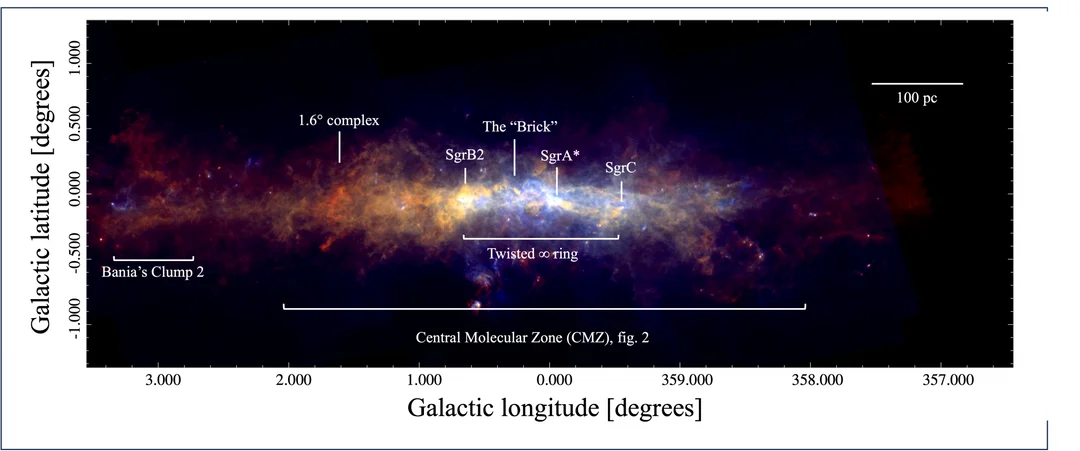
Milky Way’s Hidden Wonders: 3D Mapping, Solar System ‘Births,’ and Galactic Mysteries Unveiled
The Milky Way Galaxy, our cosmic home, is proving to be more complex and dynamic than previously imagined. Recent breakthroughs are providing unprecedented insights into its central regions, revealing hidden wonders and challenging existing theories. From detailed 3D maps of the galactic core to discoveries of hundreds of solar systems forming in extreme conditions, scientists are piecing together the puzzle of our galaxy's evolution. Get ready to dive deep into the latest galactic discoveries!
Mapping the Milky Way's Extreme Center in 3D
At the heart of the Milky Way lies a supermassive black hole, Sagittarius A*. A team of UConn researchers, led by Associate Professor Cara Battersby, has created a comprehensive 3D model of the Central Molecular Zone (CMZ), a vast and chaotic region of gas, dust, and radiation surrounding Sagittarius A*. This groundbreaking research helps understand how gas flows either orbit the galactic center, fueling star formation, or feed the black hole itself.

"We like to call the CMZ the way station of the galaxy," says Battersby, highlighting its crucial role in regulating gas inflow to the black hole. The team's work involved compiling a catalog of molecular clouds and measuring their properties.
They developed new methods to measure how much light is blocked by molecular clouds,
helping to determine if they are in front of the galactic center.
A new simple ellipse model, presented fits better than earlier models. Dani Lipman, a PhD student, emphasizes the collaborative nature of modern science, stating, "Modern science is wonderfully collaborative, so releasing our code is a huge part of engaging in the community."
A Clearer 3D Model of the Galactic Center
Building on this research, the Milky Way Laboratory at UConn presented its comprehensive analysis and 3D top-down model of the CMZ in a series of four papers in The Astrophysical Journal. This model addresses the challenge of not having a clear top-down view of the Milky Way.

The researchers used various data, including far-infrared Herschel images, to quantify the likelihood of each cloud being in front of or behind Sagittarius A*. By accounting for the dynamic movements of various clouds, the researchers found existing models lacked this complexity. "Knowing the 3D structure is essential to tracing flows towards the black hole," says Battersby.
Over 300 Solar Systems Forming in the Central Molecular Zone
In a surprising discovery, scientists have identified over 500 dense cores that may be hiding protoplanetary disks thanks to observations made with the ALMA telescope in Chile. These cores are located in the CMZ, a region with high pressures and extreme densities. More than 70% of these cores exhibit an unexpectedly “red” spectral signature.
The research team suspects that protoplanetary disks are forming in the clouds there.
The team used an innovative dual-band technique. After ruling out instrumental errors, the researchers proposed two hypotheses. Both hypothesis agree on an unprecedented fact: that the CMZ may harbor hundreds, and perhaps thousands, of protoplanetary disks in formation. Professor Peter Schilke notes, "It’s extraordinary to have detected possible protoplanetary disks in a region so different from our solar neighborhood."
These discoveries are revolutionizing our understanding of the Milky Way. For the first time,
we can visually the extreme conditions and hidden processes that shape our galaxy.
What further secrets does the Milky Way hold? How do these extreme conditions affect the formation of planets? Share your thoughts and theories in the comments below!